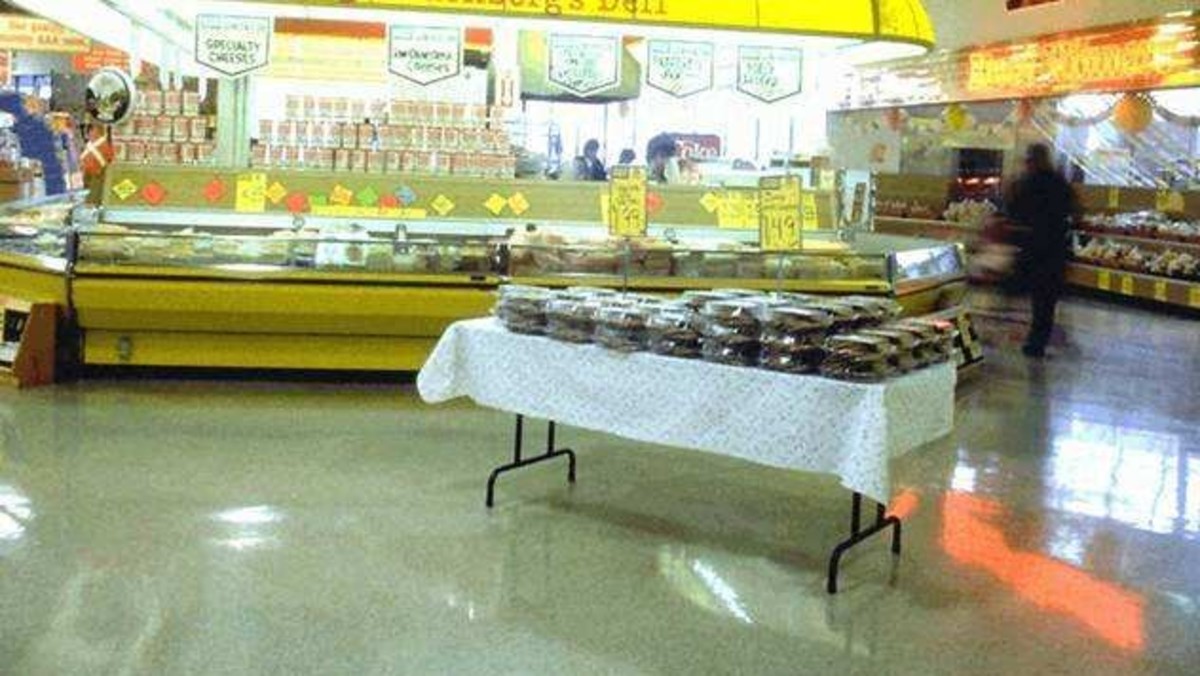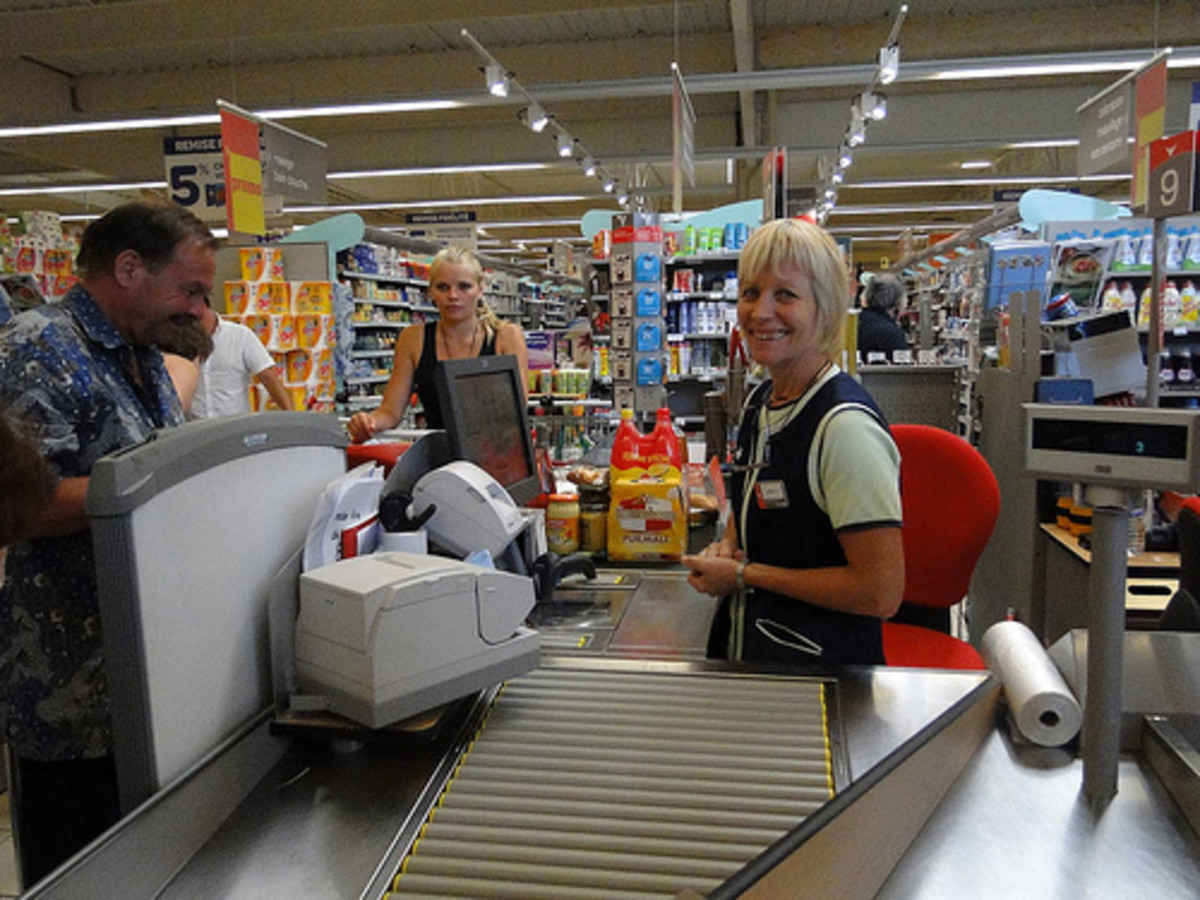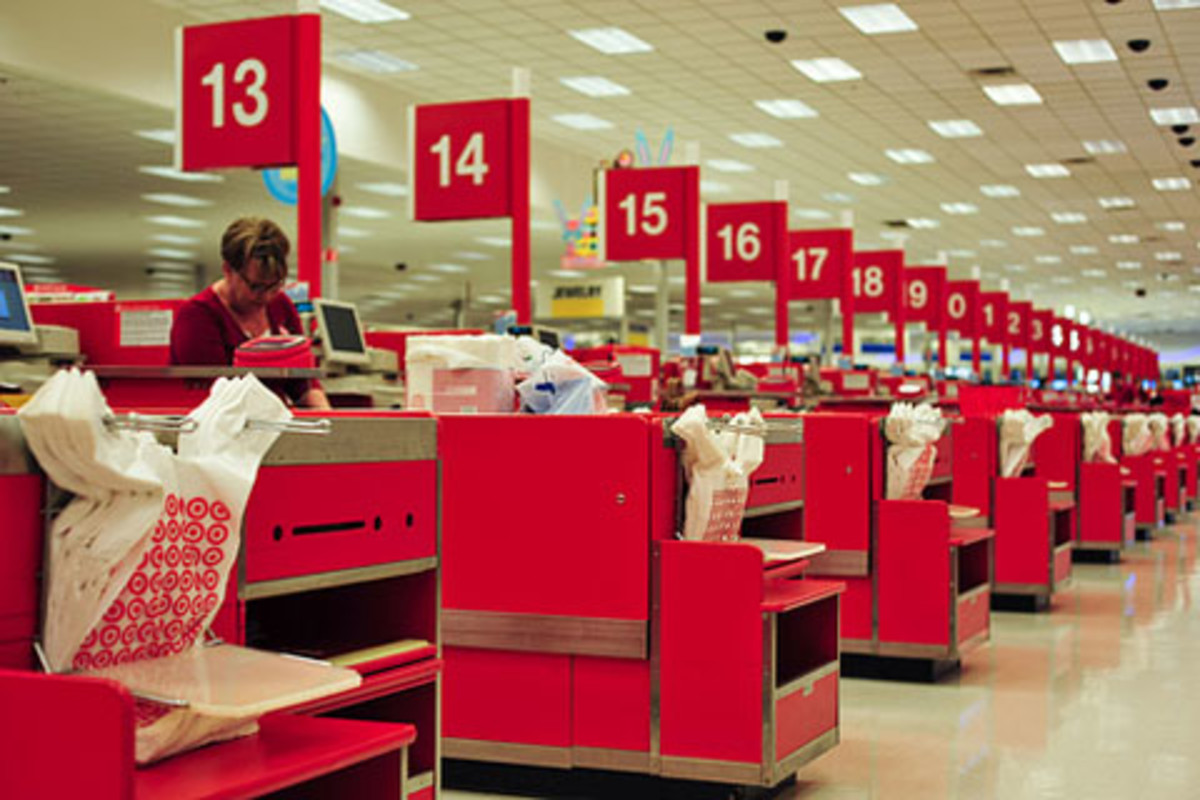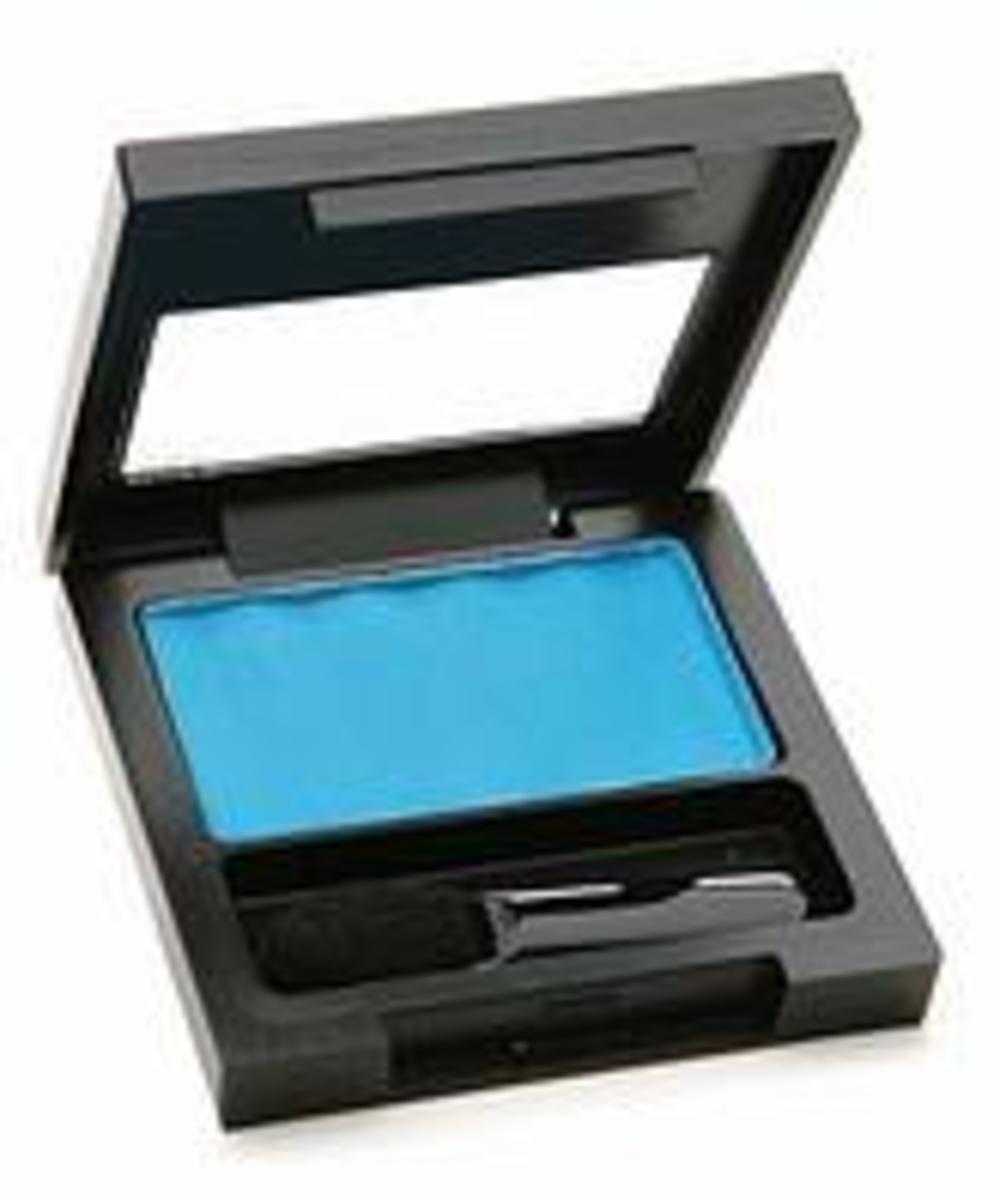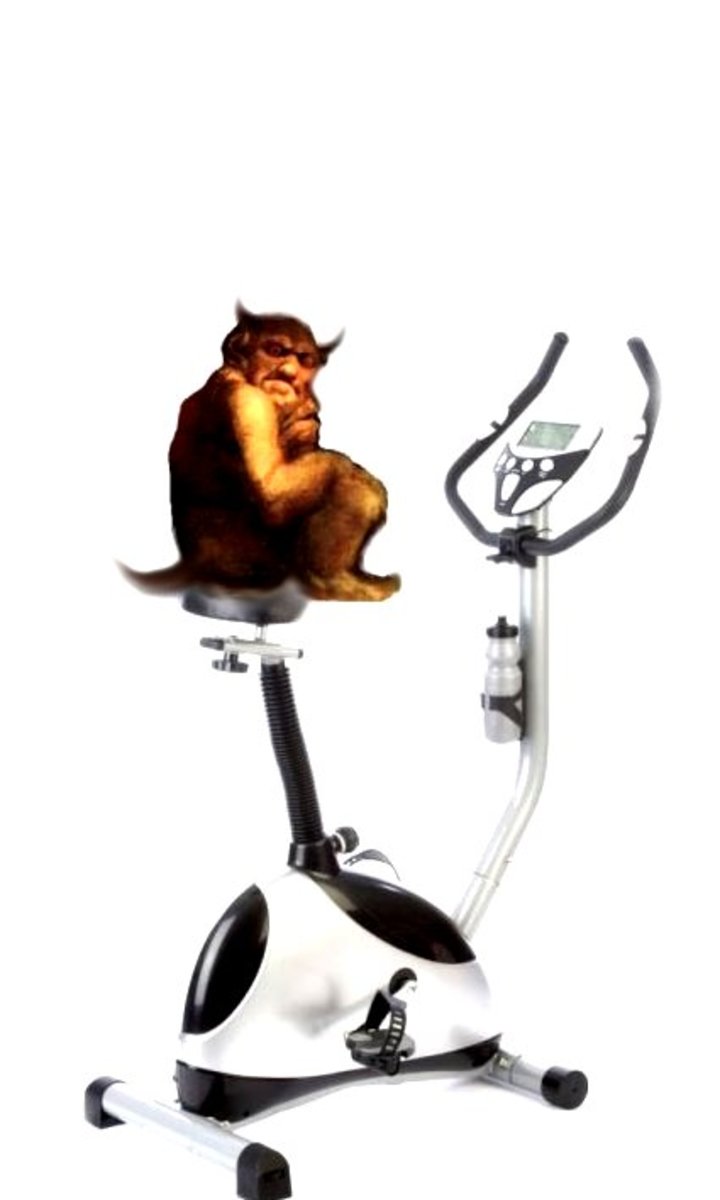- HubPages»
- Books, Literature, and Writing»
- Commercial & Creative Writing»
- Creative Writing»
- Humor Writing
Checkout Lines and How the People in Them Act.
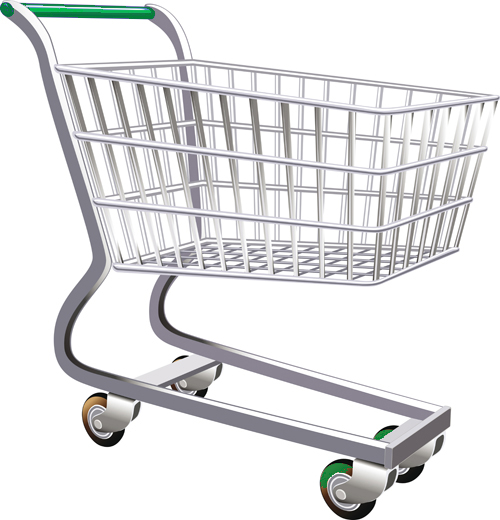
Checkout Lines
We all have to use them!
One of the real curses, in my opinion, of the modern retail world, is the Checkout Line.
Retailers around the world figured out, decades ago that the most efficient way to PROCESS their customers is to force them into lines (similar to those at a Slaughter House, by the way.) and up to tiny enclosed counters, and then perform their retail sales ritual.
This ritual, initiated and managed by scanning bar code labels on each item the customer wants to purchase, has several purposes:
- First, the process individually confirms the item that the customer has selected, is entered and thus, managed by their computerized materials management system. You know Inventory Control!
- Then, the computer confirms that the exact and proper price is charged and paid for each item that is processed and placed into a bag for the customer. Money Management!
- And, of course, the see-through cart, the narrow aisle, and the small, moving shelf, are all designed to confirm that the customer does not take anything extra out of their store, without paying for it. Essentially, this is a customer Security Check!
- And finally, this scanning/pricing system essentially removes the Cashier from the payment decision process, thus eliminating potential employee theft, in addition to those simple human mistakes entering pricing. Employee Security Check!
All of this combines into a smoothly running system of instant financial gratification for the world of retail sales.
A Little History Lesson - The Bar Code Label!
In the Beginning, there was the invention of the Bar Code Label!
And the Financial Managers around the world rejoiced and said; It is Good!
And, all the products of the land, were required to be labeled with these little rows of black lines.
And, all of the stores were required to have a cash register that included wires running to central computers, and strange hand-held devices that could read and understand the little rows of black lines.
And the Financial Managers rejoiced even more, and said; This is Really Good!
"Our profits are up, and our losses due to theft and cashier errors are down! I have immediate access to inventory counts, and sales.
Yay, Let us go and sacrifice a Lamb to the great Bar Code!
YaDa! YaDa! YaDa!
Anyway, the invention, and the application, were fantastic for the retail world, as well as manufacturing process controls, data collections systems and on and on.
My problems are not with the Bar Code label, its concept, or it's applications. My problem is with that cursed Check Out Line that exists today, and how it is used and abused.
Used and abused by the retail companies as well as the customers.
The Checkout Line
Eventually, there was the Check Out line.
A simple thing, really.
A long counter for the customer to place the items they want to purchase.
A Cash Register at the end, for scanning the items, and closing the sale.
A Cashier, who, once trained, handles the scanner, and the payment process.
That's it. Nice and simple!
But, over time, the retail companies became large corporations, and conglomerates, and they built larger stores, carrying more inventory, and each store now had dozens of cashier lines, instead of just a few, and there were more and more people standing in the lines.
Checkout Line Problems
And, along with this growth, the problems started to pop up, both for the customer, and for the business. Problems like;
- The Customer in a Hurry- One of the first problems that arose was the fact that people who only want to get a couple of items and go home, really do not want to be standing in line behind a half a dozen other shoppers who might have dozens of items that they want to purchase. No business wants an unhappy customer!
- The Mislabeled Product- This one is a lot bigger problem than you would think. If the scanner cannot collect the right data from the label, or, the data/price is wrong, then the checkout line is stopped, and nothing happens until someone runs back to the shelf that the item was stocked on, and the item/price is confirmed the old fashioned way, by a human. Then the appropriate corrections have to be added to the outer, usually with a managers oversight and approval, and then, finally, the line can begin to move again. By this time, pretty much everyone in the line is upset.
- The Credit Card- It was inevitable that once a retail business has a connection from the cash register to a central computer, then the next logical business step is to connect the computer to the credit card companies of the world. Along with that decision though, came a new list of problems, like; the credit card without adequate funds, the credit card with a damaged scan strip, the bad bank computer connection, etc. Each time one of these cases occurs, again, the line stops, the management is called in, and a long line of customers become unhappy customers.
- The Unhappy Customer- Of course, after you, the customer, stand in line for one or more of these delays, you can easily become the next problem. You are mad, and the only place you can vent, is with the cashier. You know, the one person that you can interface with is also the one with probably the least amount of control of anyone in the store. This, is now a new level of problem for the retail business. If a customer is venting his/her wrath at the cashier, then, that retail line is stopped again, causing even more unhappy customers.
If you have these situations occur very often, and your customers start looking for other places to shop.
There was a real need for some real viable resolutions, and it wasn't long before this spawned some innovations in the great Checkout line concept.
The Self-Checkout
I like to imagine it happening like this!
A Bean-counter walks out of his office building, and actually visits one of the company's retail establishments.
He walks in, and is stunned! There are cashiers just standing at their registers, and not waiting on anyone!
This is unacceptable! what a waste of salaries and personnel. He races back to his finance manager, and his little office cubicle, and all he can think is: OFF WITH THEIR HEADS! Fire whomever is responsible for such a flagrant waste of money.
Meetings are called in upper management.
Study Groups are formed!
Consultants are called in!
Millions are spent researching a better way!
And, eventually, someone actually has an idea!
Let's force the customer to check their own items out, thus eliminating the cashier totally.
More studies are done,
More consultants are called in to design such a system.
Computer Models are run.
Time studies are run.
Finally, this new idea is actually run in a real store.
Self Checkout Problems
WHOOPS!
A few little problems need fixing.
First, the customer is not trained to scan products. So, someone has to be called in to show them how.
Now there are people on the self-checkout lines just to show the idiot customers how to scan an item.
They get this under control by committing a cashier/trainer/overseer to several lines, and then the next problem shows up.
There are people out there who quickly figure out that with only one person looking over multiple check-out lines, there are improved opportunities to steal.
For instance, put five items on the shelf, scan the cheapest five times, bag your five items, and walk out with all of the items.
If they catch you, blame the scanner, blame the computer, blame your lack of knowledge on what you were supposed to do. Now the simple cashier, has to also be a cop!
And, of course, there is the necessary addition of more complex software, and video monitoring systems.
By the time the system is "perfected" and implemented at all of the retail stores, and the original bean-counter has gotten his promotion, and enormous bonus, a study shows that yes, one cashier can oversee four or more check-out stations. There is a reduction in the workforce.
But, most of the customers hate checking their own purchases out, and the base cost for the improved cash registers, scanners, video monitoring systems, and the maintenance of the more complex software, all costs significantly more than the original estimates.
This could be called "Improvement through the Implementation of higher cost and more complex systems."
And the average customer is still unhappy!
The Express Lane
Before the fiasco of Self-Checkout was implemented, the retailers of the world made a valiant attempt to make their customers happy by providing a special line for their customers that only had a few items to purchase. It was called the Express Lane!
And, it really was a good idea. I am in a hurry, and only want to purchase a couple of items, and I do not want to stand in a long line. So, I can go down to the Express Lane, and that line is only for people with a small number of items, say 10 or 15 maximum.
The theory is, I can whip through this small line, with a lot less waiting, and be gone before those people, with a basket or two full of items, can even get up to the regular cashier.
A great idea, and one that works most of the time.
The Real Problem with Checkout lines is the People!
But, the reality of dealing with people, some of whom just want to beat the system, as well as the vagaries of management, took this great idea, and turned it into a special kind of battleground. Here are a few of the things that I have personally seen happen in these Express Lanes;
- Can't Count- Lets say the maximum number of items, in the Express Lane, is ten. You have seen it yourself, there will always be a person who actually thinks that everyone else in the Express lane is OK with them having 15, or 20 items, (I have even seen an over-flowing basket of items), and slowing down everyone else, often casting a look of "so what!" over their shoulder at you.
- Food Stamper- And, of course, for some reason, many people will rush to the Express Lane with Food Stamps (or cards, etc,) and try to check out, while SLOWLY separating the 5-6 food stamp system approved, items from their beer wine and cigarettes, which are not approved. Which, of course means two checkout process' and payments. I don't care that they are using food stamps, what I care about is that they are slowing down the line with two checkouts, often including a total number of items far in excess of the maximum allowed.
- Three in a Basket- No, not three people, actually in the basket; but three people that think it is OK to place ten items each in one basket, and have three separate checkouts,each of course, with separate bagging of items, and separate credit card payments.
- Coupon Freak- Yep, I occasionally use coupons myself, but every now and then I get behind a Coupon Pro. They collect, and sort coupons, and have a goal of saving every penny possible. For some reason,and I always wonder why, if they have so many coupons, and know the exact amount they are supposed to save, why is it that they end up having one or two of their coupons rejected? And, of course, they refuse to accept the rejection, and argue, thus slowing the line down even more.
- Line Breaker- These are just rude, selfish people. Most of us do not want to use our cart, and actually run over the heels of the person in front of us. So, we will politely keep our cart back a foot or so behind the customer in front of us, but we are still obviously in that line. Over the past year, I have had two different women, each carrying only a couple of items in their arms, walk over and actually step in front of my cart, so they can avoid the wait in line. Each time I told them that I was in line and that they should go back to the end of the line. Each time I was told that "I only have 2 items, and I am in a hurry". Then, each time, they turned back around, and proceeded to ignore me and the others in line behind me, who had been waiting patiently for our turn.
- Impotent Cashiers- One of the things that allows some of these problems to exist, is the fact that the cashiers are not empowered to say anything to such people as I mention here. I actually asked several at several different stores, and each tole me that they had been instructed not to say anything to any of these types of customers, because it might upset them. And there you Are! Rules without any system of enforcement.
So, I can actually feel my Blood pressure rising when I go into a large department store , anymore. I know, that there is a high probability that someone, or just the system itself will get me going, and I just don't need the aggravation.
My wife, is kinder, and more forgiving of people and buraucracy, so often, I will send her into this corporate den of inequities.
Not a solution, but it is best that I not end up arrested for battery, when the time comes that I eventually blow up at one of these people I have described.
Checkout Line - A song
Don Bobbitt's Authors Page
- Amazon.com: Donald W Bobbitt: Published Books
Click here to see Don Bobbitt's Authors page for a list of all of his published books in both Paperback and Kindle formats.
This content is accurate and true to the best of the author’s knowledge and is not meant to substitute for formal and individualized advice from a qualified professional.

